Call Us - 0458 190 172
Scarring

Common Skin Concern
Scarring
The skin, our body's largest organ, serves as a protective barrier against heat, light, injury, infection, and other external factors. When we experience an injury or wound, the skin regenerates as part of the body's natural healing process, often resulting in scars.
The severity and appearance of scars depend on various factors, including the depth and size of the injury, genetics, overall health, and even gender and ethnicity. While Laser Skin Aesthetics cannot guarantee complete removal of scars, appropriate treatment can significantly reduce their appearance and improve skin texture.
Schedule Your Scar Reduction Treatment Today!

Common Skin Concern
Scarring
The skin, our body's largest organ, serves as a protective barrier against heat, light, injury, infection, and other external factors. When we experience an injury or wound, the skin regenerates as part of the body's natural healing process, often resulting in scars.
The severity and appearance of scars depend on various factors, including the depth and size of the injury, genetics, overall health, and even gender and ethnicity. While Laser Skin Aesthetics cannot guarantee complete removal of scars, appropriate treatment can significantly reduce their appearance and improve skin texture.
Schedule Your Scar Reduction Treatment Today!
What is Scarring?
A scar is the result of your body’s natural healing response to an injury or wound, occurring through a complex three-phase process of inflammation, proliferation, and maturation.
This healing process often leaves a scar that may be raised, sunken, lumpy, smooth, red, or itchy. Unfortunately, not all scars are welcome, leading many people to seek treatment to improve the appearance of unwanted, visible scars.
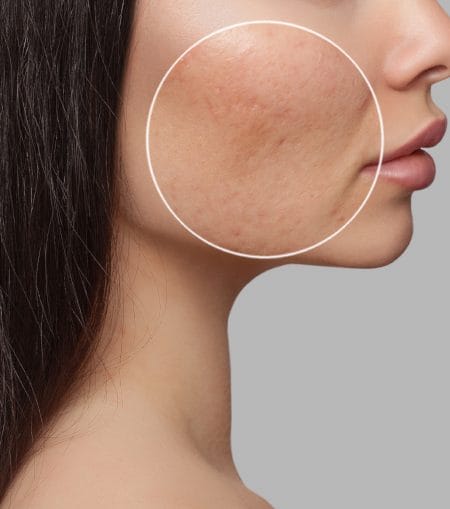

What is Scarring
A scar results from your body’s natural healing response to an injury or wound through a complex three-phase process of inflammation, proliferation, and maturation.
This healing process often leaves a scar that may be raised, sunken, lumpy, smooth, red, or itchy. Unfortunately, not all wounds are welcome, leading many to seek treatment to improve the appearance of unwanted, visible scars.
Types of Scarring
Types of Scarring
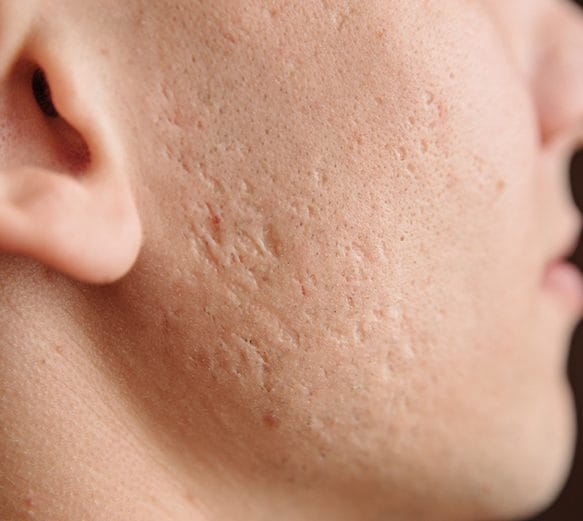
Atrophic Scars
Atrophic scars heal below the normal layer of skin tissue, appearing indented, depressed, or sunken. These scars result from the destruction of collagen during inflammatory conditions like acne. Atrophic scars can be categorised into three types: Ice pick scars, Boxar scars, Rolling scars.
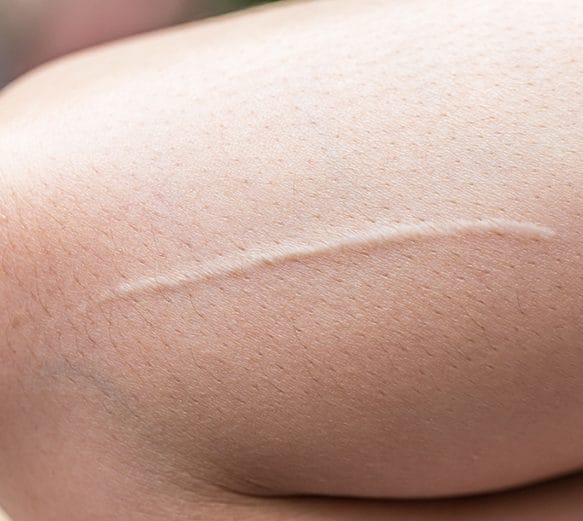
Hypertrophic Scars
Hypertrophic scars heal above the normal layer of skin tissue, appearing thicker, raised, and varying in colour from pink to red. These scars do not extend beyond the boundaries of the injury site and may regress over time with treatment. They are caused by the abnormal production of extra collagen at the injury site during the healing phase.
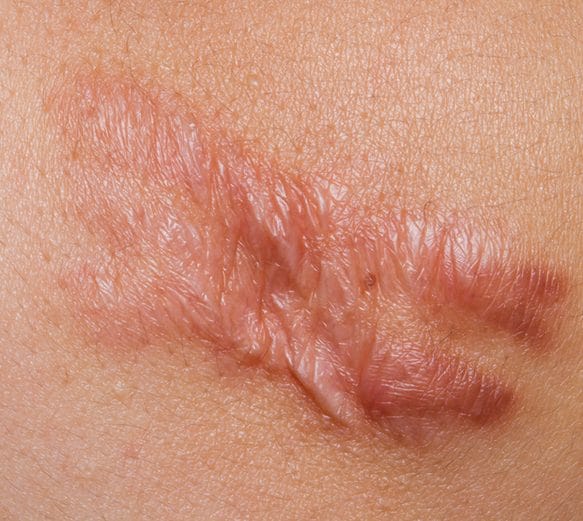
Keloid Scars
Like hypertrophic scars, keloid scars rise above skin level but extend beyond the injury site and do not regress. They form due to excessive collagen production, often appearing red to purple. Harder to treat, keloid scars can affect mobility depending on severity and location. Unfortunately, Laser Skin Aesthetics does not treat keloid scars.
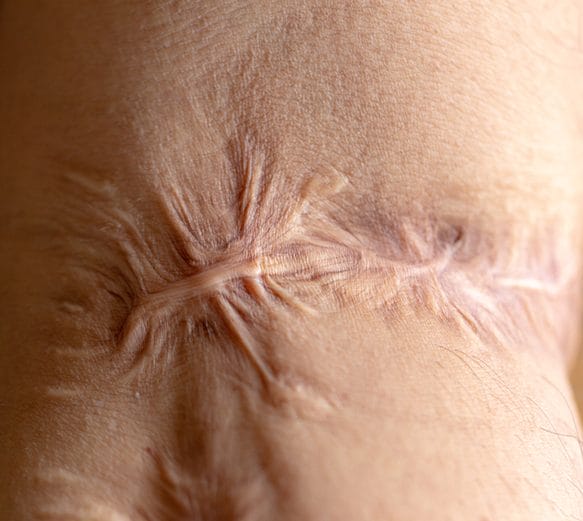
Contracture Scars
Contracture scars occur when a large area of skin is damaged and lost, often due to burns. These scars pull the edges of the skin together, creating a tight area that can impair mobility. Contracture scars may extend deeper, affecting the muscles and nerves beneath. Treatment for contracture scars is often surgical.

Atrophic Scars
Atrophic scars heal below the normal layer of skin tissue, appearing indented, depressed, or sunken. These scars result from the destruction of collagen during inflammatory conditions like acne. Atrophic scars can be categorised into three types: Ice pick scars, Boxar scars, Rolling scars.

Hypertrophic Scars
Hypertrophic scars heal above the normal layer of skin tissue, appearing thicker, raised, and varying in colour from pink to red. These scars do not extend beyond the boundaries of the injury site and may regress over time with treatment. They are caused by the abnormal production of extra collagen at the injury site during the healing phase.

Keloid Scars
Like hypertrophic scars, keloid scars rise above skin level but extend beyond the injury site and do not regress. They form due to excessive collagen production, often appearing red to purple. Harder to treat, keloid scars can affect mobility depending on severity and location. Unfortunately, Laser Skin Aesthetics does not treat keloid scars.

Contracture Scars
Contracture scars occur when a large area of skin is damaged and lost, often due to burns. These scars pull the edges of the skin together, creating a tight area that can impair mobility. Contracture scars may extend deeper, affecting the muscles and nerves beneath. Treatment for contracture scars is often surgical.
Our Treatments for Scarring
Our Treatments for Scarring

Laser Scar Removal
Our advanced Pico laser treatment targets scars by breaking down scar tissue, stimulate collagen production, and promote skin regeneration. Over time, this process helps smooth out the skin’s texture and improve overall tone.
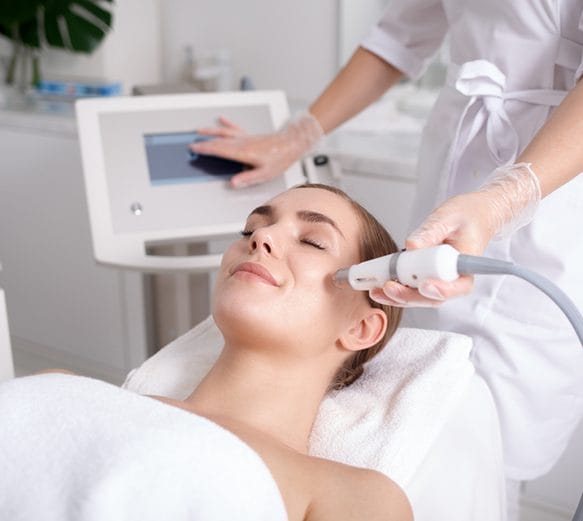
Laser Rejuvenation
Our Rejuvenation treatment employs Fraxel Laser to resurface the skin, effectively reducing wrinkles, acne, scarring, and pigmentation. It also significantly enhances skin quality, providing a rejuvenated appearance for both the face and body.
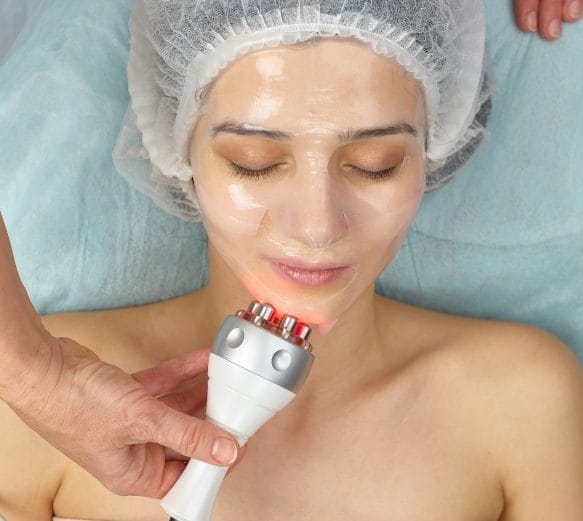
RF Skin Tightening
RF skin tightening combines radio frequency and laser rejuvenation to induce a powerful, natural healing response in your skin. This procedure targets fine lines, wrinkles, loose skin, scarring, stretch marks and enlarged pores.

LED Light Therapy
A non-abrasive, low-level light treatment that penetrates the skin using light-emitting diodes to target scars, promote healing, and stimulate collagen production for smoother, more even skin.

Laser Scar Removal
Our advanced Pico laser treatment targets scars by breaking down scar tissue, stimulate collagen production, and promote skin regeneration. Over time, this process helps smooth out the skin’s texture and improve overall tone. Multiple sessions may be required for optimal results, depending on the severity of the scars.

Laser Rejuvenation
Our Rejuvenation treatment employs Fraxel Laser to resurface the skin, effectively reducing wrinkles, acne, scarring, and pigmentation. It also significantly enhances skin quality, providing a rejuvenated appearance for both the face and body.

RF Skin Tightening
RF skin tightening combines radio frequency and laser rejuvenation to induce a powerful, natural healing response in your skin. This procedure targets fine lines, wrinkles, loose skin, scarring, stretch marks and enlarged pores.

LED Light Therapy
A non-abrasive, low-level light treatment that penetrates the skin using light-emitting diodes to target scars, promote healing, and stimulate collagen production for smoother, more even skin.
Frequently Asked Questions
Can scars be completely removed?
It is challenging to completely remove scars, but various treatments can significantly reduce their appearance. Treatments aim to make scars less noticeable by improving their colour, texture, and overall appearance. It is challenging to completely remove scars, but various treatments can significantly reduce their appearance. Treatments aim to make scars less noticeable by improving their colour, texture, and overall appearance.
What treatments are available for scars?
Treatments for scars include:
- Topical treatments: Silicone gels, creams, and ointments that can help reduce scar size and improve texture.
- Laser therapy: Reduces redness and flattens raised scars.
- Microneedling: Promotes collagen production to improve skin texture.
- Chemical peels: Remove the outer layer of skin to improve skin texture and appearance.
- Surgery: In some cases, surgical removal or revision can improve the appearance of scars.
- Injectable treatments: Steroids or fillers can help flatten and improve the appearance of certain types of scars.
How can I prevent scars from forming?
To minimise scarring, follow these steps:
- Keep wounds clean: Clean the wound with mild soap and water to prevent infection.
- Moisturise: Apply a healing ointment or petroleum jelly to keep the wound moist.
- Protect from the sun: Use sunscreen to prevent the scar from becoming darker.
- Avoid picking: Do not pick at scabs or healing wounds.
- Cover the wound: Use bandages or silicone sheets to protect and promote healing.
How long does it take for scars to heal?
The healing process varies depending on the type and severity of the scar. Most scars take several months to a year to fully mature. During this time, they may change in appearance, becoming flatter and less noticeable.
Are there any natural remedies for scars?
Some natural remedies that may help improve the appearance of scars include:
- Aloe vera: Known for its healing properties, it can help soothe and reduce scar tissue.
- Coconut oil: Moisturises and promotes healing.
- Honey: Has natural antibacterial properties and can aid in wound healing.
- Vitamin E: This may help improve skin elasticity and reduce scar visibility.
Can diet and lifestyle affect scar healing?
Yes, a healthy diet and lifestyle can promote better skin healing. Consuming a balanced diet rich in vitamins and minerals, staying hydrated, avoiding smoking, and protecting your skin from excessive sun exposure can improve scar healing.
By understanding the causes, types, and treatments of scars, you can take steps to minimize their appearance and improve your skin’s health and appearance.
Frequently Asked Questions
Can scars be completely removed?
It is challenging to completely remove scars, but various treatments can significantly reduce their appearance. Treatments aim to make scars less noticeable by improving their colour, texture, and overall appearance. It is challenging to completely remove scars, but various treatments can significantly reduce their appearance. Treatments aim to make scars less noticeable by improving their colour, texture, and overall appearance.
What treatments are available for scars?
Treatments for scars include:
- Topical treatments: Silicone gels, creams, and ointments that can help reduce scar size and improve texture.
- Laser therapy: Reduces redness and flattens raised scars.
- Microneedling: Promotes collagen production to improve skin texture.
- Chemical peels: Remove the outer layer of skin to improve skin texture and appearance.
- Surgery: In some cases, surgical removal or revision can improve the appearance of scars.
- Injectable treatments: Steroids or fillers can help flatten and improve the appearance of certain types of scars.
How can I prevent scars from forming?
To minimise scarring, follow these steps:
- Keep wounds clean: Clean the wound with mild soap and water to prevent infection.
- Moisturise: Apply a healing ointment or petroleum jelly to moisten the wound.
- Protect from the sun: Use sunscreen to prevent the scar from becoming darker.
- Avoid picking: Do not pick at scabs or healing wounds.
- Cover the wound: Use bandages or silicone sheets to protect and promote healing.
How long does it take for scars to heal?
The healing process varies depending on the type and severity of the scar. Most scars take several months to a year to fully mature. During this time, they may change in appearance, becoming flatter and less noticeable.
Are there any natural remedies for scars?
Some natural remedies that may help improve the appearance of scars include:
- Aloe vera: Known for its healing properties, it can help soothe and reduce scar tissue.
- Coconut oil: Moisturises and promotes healing.
- Honey: Has natural antibacterial properties and can aid in wound healing.
- Vitamin E: This may help improve skin elasticity and reduce scar visibility.
Can diet and lifestyle affect scar healing?
Yes, a healthy diet and lifestyle can promote better skin healing. Consuming a balanced diet rich in vitamins and minerals, staying hydrated, avoiding smoking, and protecting your skin from excessive sun exposure can improve scar healing.
By understanding the causes, types, and treatments of scars, you can take steps to minimize their appearance and improve your skin’s health and appearance.
